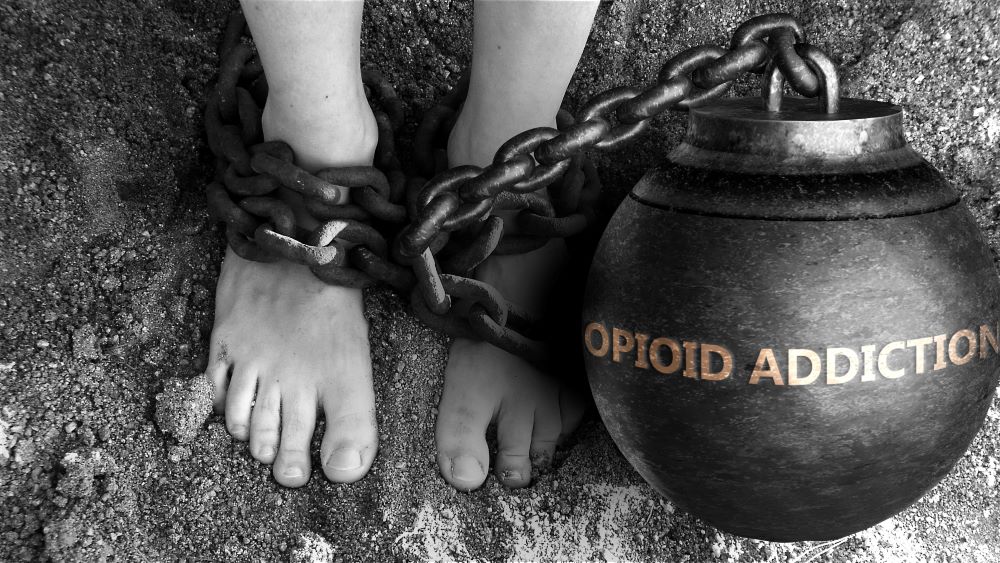How to Cope With Opioid Addiction?

Opiate addiction is a serious problem in the United States. According to the Centers for Disease Control and Prevention (CDC), more than 2 million Americans were addicted to prescription opioids in 2014. In 2012, there were 259 million prescriptions written for opioids, which is enough for every adult in the country to have their own bottle of pills.
What Causes Opiate Withdrawal Symptoms?
Opioids work by attaching to specific proteins called opioid receptors, which are located in the brain, spinal cord, and other organs in the body. When opioids or prescription pain relievers attach to these receptors, they reduce pain signals sent to the brain and can produce a feeling of euphoria. People who become addicted to opioids may begin taking them recreationally and then find they need the drugs to feel good or to avoid feeling bad.
People can become addicted to opioids after taking them for a short period of time or after taking them as prescribed by their doctor. The longer someone takes opioids, the more likely they are to become dependent on them. Dependence means that the body has adapted to the presence of the opioid and withdrawal symptoms will occur if use is stopped.
How Do Opioids Affect The Brain?
When people take opioids for a long time, the brain adapts to their presence and begins to rely on them to function normally. This means that when someone tries to stop taking opioids, they may experience withdrawal symptoms because their brain is no longer able to produce certain chemicals on its own.
Managing Withdrawal Symptoms
There are a number of things people can do to manage opioid withdrawal symptoms. Some of the most effective strategies include:
Staying Hydrated
When you’re going through opioid withdrawal, it’s important to stay hydrated by drinking plenty of fluids. This will help to flush the drugs from your system and reduce the severity of your symptoms.
Replacing Lost Nutrients
Opioid addiction can cause people to lose a lot of weight due to poor nutrition. In order to rebuild your body and improve your health, it’s important to replace the nutrients you’ve lost. This can be done by eating healthy foods and taking supplements as needed.
Exercising Regularly
Exercising regularly can help to ease opioid withdrawal symptoms by releasing endorphins into the brain. Endorphins are chemicals that act as natural painkillers and can help to improve moods.
Participating in Support Groups
Support groups provide a space for people to share their experiences with opioid addiction and withdrawal. This can be a valuable resource for people who are struggling to cope with their symptoms.
Medications
There are a number of prescription medications that can be used to help ease the symptoms of opioid withdrawal. These include:
Buprenorphine: Buprenorphine is a medication that binds to opioid receptors in the brain and can help to reduce cravings and withdrawal symptoms.
Naloxone: Naloxone is a medication that reverses the effects of opioids and can be used in case of an overdose.
Clonidine: Clonidine is a blood pressure medication that can help to reduce anxiety, sweating, and other withdrawal symptoms.
Treating The Underlying Cause
In some cases, the underlying cause of opioid addiction and substance abuse can be treated. This may include addressing mental health disorders or chronic pain conditions with therapy or medication.
Preventing Relapse
After someone has successfully completed treatment for opioid addiction, it’s important to take steps to prevent relapse. Some of the most effective strategies for preventing relapse include:
Staying in Treatment
It’s important to stay in treatment even after you’ve completed detox and are feeling better. Treatment can help you learn how to cope with triggers and cravings, and it can provide support during difficult times.
Creating a Support Network
It’s important to have a support network of friends and family members who understand your addiction and can provide emotional support. This can help you stay on track in your recovery.
Making Healthy Lifestyle Choices
Certain lifestyle choices can help to reduce the risk of relapse, such as eating a healthy diet, exercising regularly, and getting enough sleep.
The more opioids a person takes, the more likely they are to become dependent on them. Dependence means that the body has adapted to the presence of the opioid and withdrawal symptoms will occur if use is stopped.
When people take opioids for a long time, the brain adapts to their presence and begins to rely on them to function normally. This means that when someone tries to stop taking opioids, they may experience withdrawal symptoms because their brain is no longer able to produce certain chemicals on its own.
If you or someone you know is struggling with opioid addiction, don’t hesitate to seek help. There are a number of treatment options available that can help you overcome this disease.
Can Opioid Withdrawal Cause Death?
Opioid withdrawal can be uncomfortable, but it is not life-threatening. However, if someone tries to stop taking opioids suddenly after being dependent on them, they may experience seizures or other health complications. This is why it is important to seek medical help when detoxing from opioids.
Opioid withdrawal can be a difficult process, but there are things that can be done to make it easier. Withdrawal symptoms can be managed with the help of medication and other treatments. It is important to seek professional help when detoxing from opioids.
How Long Does Opioid Withdrawal Last?
The length of time that opioid withdrawal lasts varies from person to person. Some people may only develop withdrawal symptoms that last for a few days, while others may have a more severe withdrawal process that can last for weeks or longer.
What Are The Chances of Relapse After Opioid Withdrawal?
The chances of relapse after opioid withdrawal depend on a number of factors, such as the severity of addiction, co-occurring mental health disorders, and whether or not someone has a support system in place. However, with treatment and support, people can recover from opioid addiction and avoid relapse.
Opioid Detox Options & Withdrawal Treatment
There are several options for detoxing from opioids, including inpatient and outpatient programs. Inpatient programs provide around-the-clock care, while outpatient programs allow people to continue living at home.
There are also a number of medications that can be used to help ease withdrawal symptoms of opioid use disorder. The most common medications used in opioid detox are clonidine and methadone. Clonidine helps reduce anxiety, agitation, and muscle aches, while methadone helps reduce cravings and opiate withdrawal symptoms.
It is important to seek professional help when detoxing from opioids. A healthcare provider can help create a plan that is best suited for the individual’s needs.
Emmaus Medical & Counseling provides opioid addiction treatment services for individuals who are addicted to prescription pain medication or heroin. We offer a variety of treatment options, including inpatient and outpatient programs, as well as medication-assisted treatment. We also provide counseling and support services to help you overcome your addiction and maintain sobriety.
If you or someone you know is struggling with opioid addiction, please don’t hesitate to call us for help.






